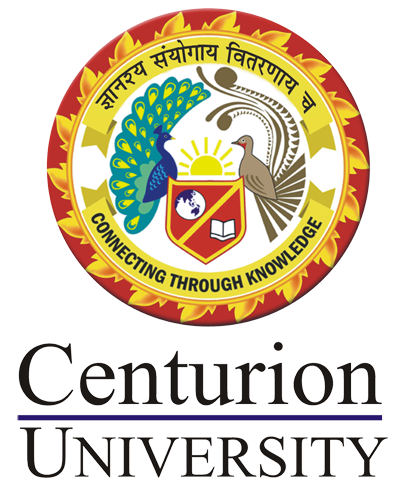Geometrical Optics
Course Attendees
Still no participant
Course Reviews
Still no reviews
Course Name : Geometrical Optics
Code(Credit) : ABC01(3-1-0)
Course Objectives
- To study of light and its behavior as it propagates in a variety of media.
- To understand the phenomena of reflection and refraction of light at boundaries between media and subsequent image formation will be dealt with in detail.
- To study the reflections at plane and spherical surfaces and refractions at plane, spherical, cylindrical and toric surfaces.
- To Attention will be given to the system of surfaces and/or lenses and their imaging properties.
- To study the effect of aperture stops on the quality of images, such as blur, aberrations, depth of field and depth of focus.
Learning Outcomes
- The objective of this course is to equip the students with a thorough knowledge of mirrors and lenses. At the end of this course, students will be able to predict the basic properties of the images formed on the retina by the optics of the eye.
Course Syllabus
Module 1 (5 Hours)
Nature of light –light as electromagnetic oscillation; ideas of sinusoidal oscillations; amplitude and phase; speed of light in vacuum and other media; refractive index. Wavefronts–spherical, elliptical and plane; Curvature and vergence; rays; convergence and divergence in terms of rays and vergence; vergence at a distance. Refractive index; its dependence on wavelength.
Module 2 (6 Hours)
Fermat’s and Huygen’s Principle –Derivation of laws of reflection and refraction (Snell’s law) from these principles. Plane mirrors –height of the mirror; rotation of the mirror. Reflection by a spherical mirror –paraxial approximation; sign convention; derivation of vergence equation. Imaging by concave mirror, convex mirror. .
Module 3 (5 Hours)
Reflectivity; transmissivity; Snell’s Law, Refraction at a plane surface. Glass slab; displacement without deviation; displacement without dispersion. Thick prisms; angle of prism; deviation produced by a prism; refractive index of the prism. Prisms; angular dispersion; dispersive power; Abbe’s number.
Module 4 (4 Hours)
Definition of crown and flint glasses; materials of high refractive index. Thin prism –definition; definition of Prism diopter; deviation produced by a thin prism; it dependence on refractive index.
Module 5 (6 Hours)
Nodal Planes. Sag formula. Paraxial approximation; derivation of vergence equation. Imaging by a positive powered surface and negative powered surface. Refraction by a spherical surface; sign convention; introduction to spherical aberration using image formed by a spherical surface of a distance object
Module 6 (6 Hours)
Thin lens as a special case of thick lens; review of sign convention. Imaging by a thin convex lens; image properties (real/virtual; erect/inverted; magnified/minified) for various object positions. Imaging by a thin concave lens; image properties (real/virtual; erect/inverted; magnified/minified) for various object positions.
Module 7 (4 Hours)
Prentice’s Rule. System of two thin lenses; review of front and back vertex powers and equivalent power, review of six cardinal points. System of more than two thin lenses; calculation of equivalent power using magnification formula
TEXT BOOK:
- Subrahmanyan N, BrijLal, A text book of Optics, S. Chand Co Ltd, New Delhi, India, 2003.
REFERENCE BOOKS:
- Pedrotti L. S, Pedrotti Sr. F. L, Optics and Vision, Prentice Hall, New Jersey, USA, 1998.
- Keating NM. P, Geometric, Physical and Visual Optics, Butterworth- Heinemann, Massachusetts, USA, 2002.
Session Plan
Session 1
Nature of light –light as electromagnetic oscillation;
Session 2
Ideas of sinusoidal oscillations; amplitude and phase; speed of light in vacuum and other media; refractive index.
Session 3
Wavefronts–spherical, elliptical and plane; Curvature and vergence; rays;
Session 4
Convergence and divergence in terms of rays and vergence; vergence at a distance.
Session 5
Refractive index; its dependence on wavelength.
Session 6
Fermat’s and Huygen’s Principle –Derivation of laws of reflection and refraction (Snell’s law) from these principles.
Session 7
Plane mirrors –height of the mirror; rotation of the mirror
Session 12
Reflectivity; transmissivity; Snell’s Law, Refraction at a plane surface. Glass slab;
Session 13
Displacement without deviation; displacement without dispersion.
Session 14
Thick prisms; angle of prism; deviation produced by a prism; refractive index of the prism
Session 15
Prisms; angular dispersion; dispersive power
Session 16
Abbe’s number
https://www.youtube.com/watch?v=dUA7Tbh1qrQ
Practice 1 : Thick Prism – determination of prism angle and dispersive power; calculation of the refractive index
http://ov-au.vlabs.ac.in/optics/Angle_of_Prism/
http://ov-au.vlabs.ac.in/optics/Spectrometer_Dispersive_Power/
http://ov-au.vlabs.ac.in/optics/Spectrometer_Refractive_Index/
Session 17
Definition of crown and flint glasses; materials of high refractive index
https://www.youtube.com/watch?v=FS2GtdtqUKc
Session 18
Thin prism –definition; definition of Prism diopter;
Session 19
Deviation produced by a thin prism; it dependence on refractive index
https://www.youtube.com/watch?v=zx07PShjJmk
Practice 2: Thin Prism – measurement of deviation; calculation of the prism diopter
Session 22
Imaging by a positive powered surface and negative powered surface.
Session 23
Refraction by a spherical surface
https://www.youtube.com/watch?v=bd0S4WexX3s
Session 24
Spherical aberration using image formed by a spherical surface of a distance object
https://www.youtube.com/watch?v=qJfCGSeF0JY
Practice 3: Image formation by spherical mirrors
Session 25
Session 27
Session 28
Image properties (real/virtual; erect/inverted; magnified/minified) for various object positions
Session 30
Image properties (real/virtual; erect/inverted; magnified/minified) for various object positions
https://www.youtube.com/watch?v=1W38cSKb3tw
Practice 4: Construction of a tabletop telescope – all three types of telescopes
https://www.youtube.com/watch?v=goL3K_xQzbE
https://www.youtube.com/watch?v=_v1RWyzQAng
Practice 5: Construction of a tabletop microscope
Session 32
System of two thin lenses, review of front and back vertex powers and equivalent power.
Session 33
Session 34
System of more than two thin lenses; calculation of equivalent power using magnification formula
https://www.youtube.com/watch?v=rogb1mLl7EU
https://www.youtube.com/watch?v=GPomGcZ3_kk
Practice 6: Imaging by a cylindrical lens
https://www.youtube.com/watch?v=XS-dnPq5u_I
Practice 7: Imaging by two cylinders in contact
https://www.youtube.com/watch?v=oNVxyIk91y4
https://www.youtube.com/watch?v=0ZjnpJDx7C4
Practice 8: Imaging by a spherocylindrical lens
Case Studies
Case Studies
Our Main Teachers
I am working as Assoc. Prof in the Department of Physics. I obtained M.Sc, M.Phil and Ph.D in Physics from Andhra University. I published number of papers. My specialization is Atomic and Molecular Spectroscopy and also interested in computational methods and material science.


Recent Comments